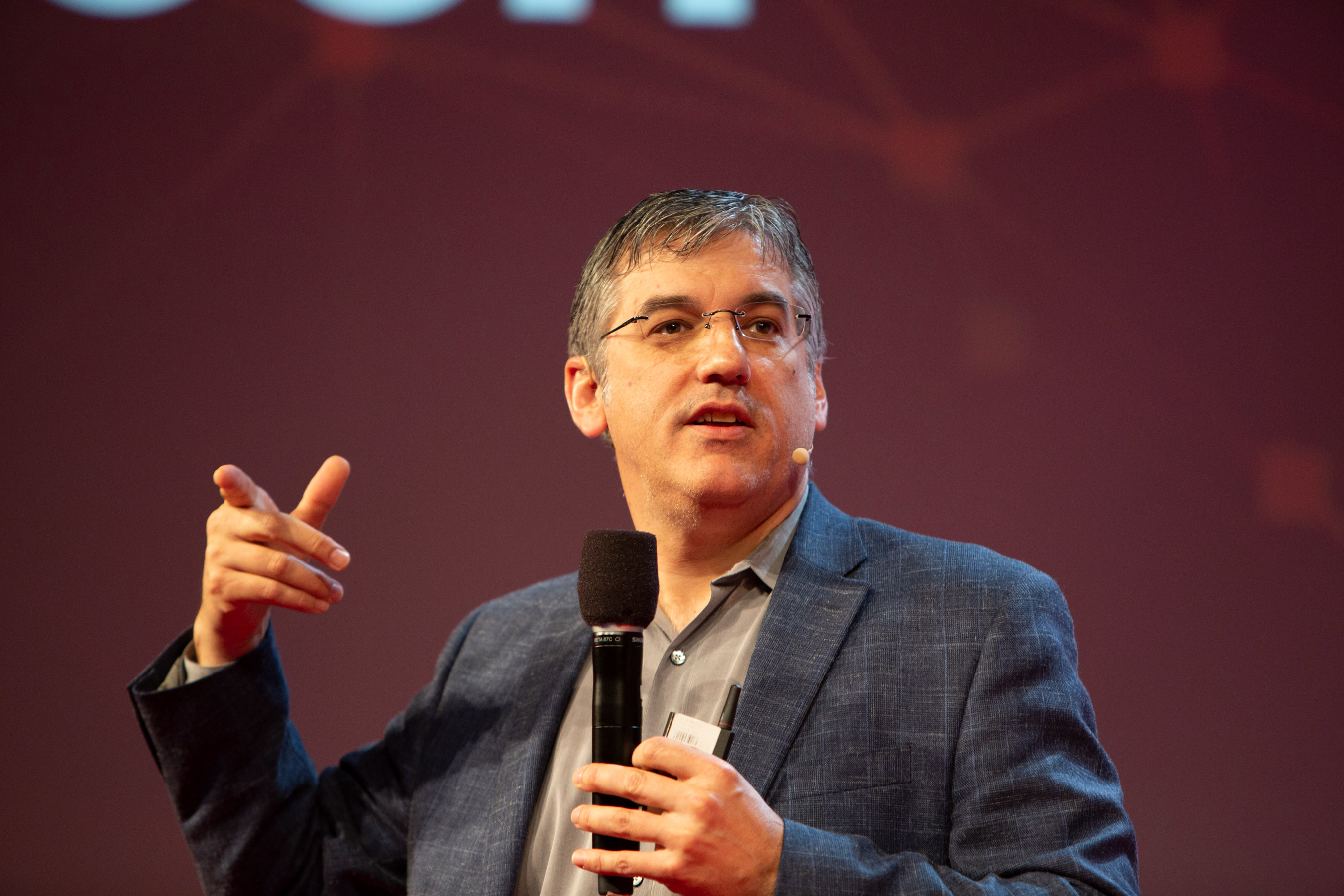US takes first step toward a quantum computing workforce

Quantum computers promise to transform computer security, finance, and many other fields by solving certain problems far faster than conventional machines. To unlock that potential, the US government has just passed a bill to foster a viable quantum computing industry.
Christopher Monroe of the University of Maryland told the audience at EmTech, a conference organized by MIT Technology Review, that the US needs a new generation of engineers, schooled in the quirks of quantum physics as well as the principles of computer engineering, to help create quantum computers that can tackle real-world problems.
That is why Monroe helped draft the National Quantum Initiative Act, a bill just passed today that would establish a federal program for accelerating research and training in quantum computing. The act will release $1.275 billion to help fund several centers of excellence that should help train many quantum engineers.
Monroe is also the cofounder of IonQ, one of several startups now racing to develop usable quantum computers. It is hard for these companies to find engineers to help them develop and commercialize scalable systems. “We need quantum systems engineers,” Monroe said. “We need that workforce.”
Quantum computers operate in a totally different way from conventional machines. In an ordinary computer, bits of information are represented using either a 1 or a 0. But in the quantum realm, matter behaves in bizarre ways. Quantum bits, or qubits, created and manipulated using superposition and entanglement, can perform certain types of calculation very rapidly on vast amounts of data.
In theory, a quantum machine with just a few hundred qubits should be able to run calculations that would be inconceivable using traditional hardware.
In practice, though, it is devilishly tricky to scale these systems up, because they are terribly sensitive to interference. Quantum computers were first proposed decades ago, but research on the technology has progressed at a glacial pace.
Startups and big tech companies are currently racing to develop more powerful quantum computers. IonQ is building its computers using ions trapped with electric fields. Several others, including Google, IBM, and Rigetti, are developing quantum computers using superconducting circuits. Rigetti recently demonstrated a new quantum cloud service (see “Running quantum algorithms in the cloud just got a lot faster”).
Monroe said the new national plan should also help the US compete internationally. China is pouring billions of dollars into its own quantum computing projects. The international picture is especially significant because these technologies promise to be useful for breaking—but also securing—communications channels.
Within five years, quantum computers would be capable of calculations that could never be run using conventional hardware, Monroe predicts. But it remains unclear precisely how useful these early systems will be, since they will only be capable of certain types of computation.
Figuring out how to use these machines will then be up to the quantum software engineers. “When we build them, they will be useful for something,” Monroe said.
Deep Dive
Computing
How ASML took over the chipmaking chessboard
MIT Technology Review sat down with outgoing CTO Martin van den Brink to talk about the company’s rise to dominance and the life and death of Moore’s Law.
How Wi-Fi sensing became usable tech
After a decade of obscurity, the technology is being used to track people’s movements.
Why it’s so hard for China’s chip industry to become self-sufficient
Chip companies from the US and China are developing new materials to reduce reliance on a Japanese monopoly. It won’t be easy.
Stay connected
Get the latest updates from
MIT Technology Review
Discover special offers, top stories, upcoming events, and more.